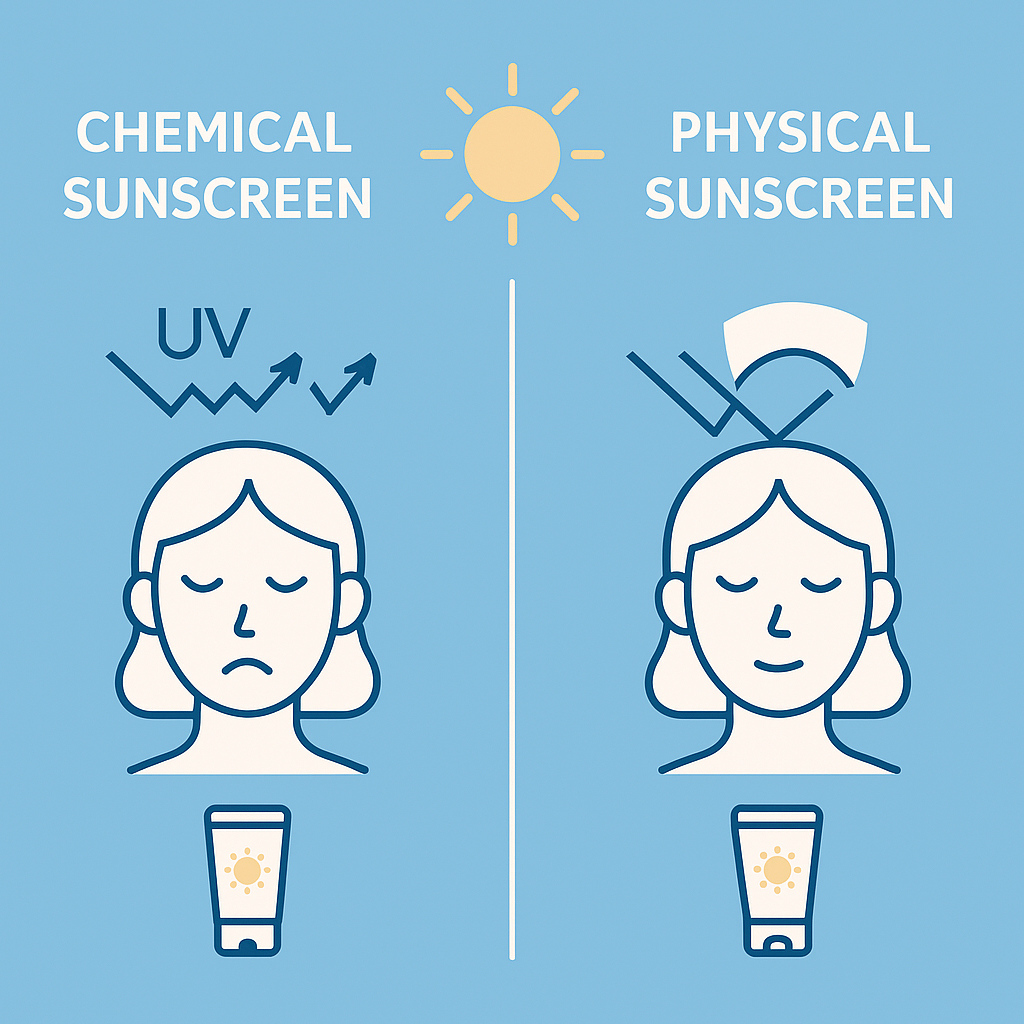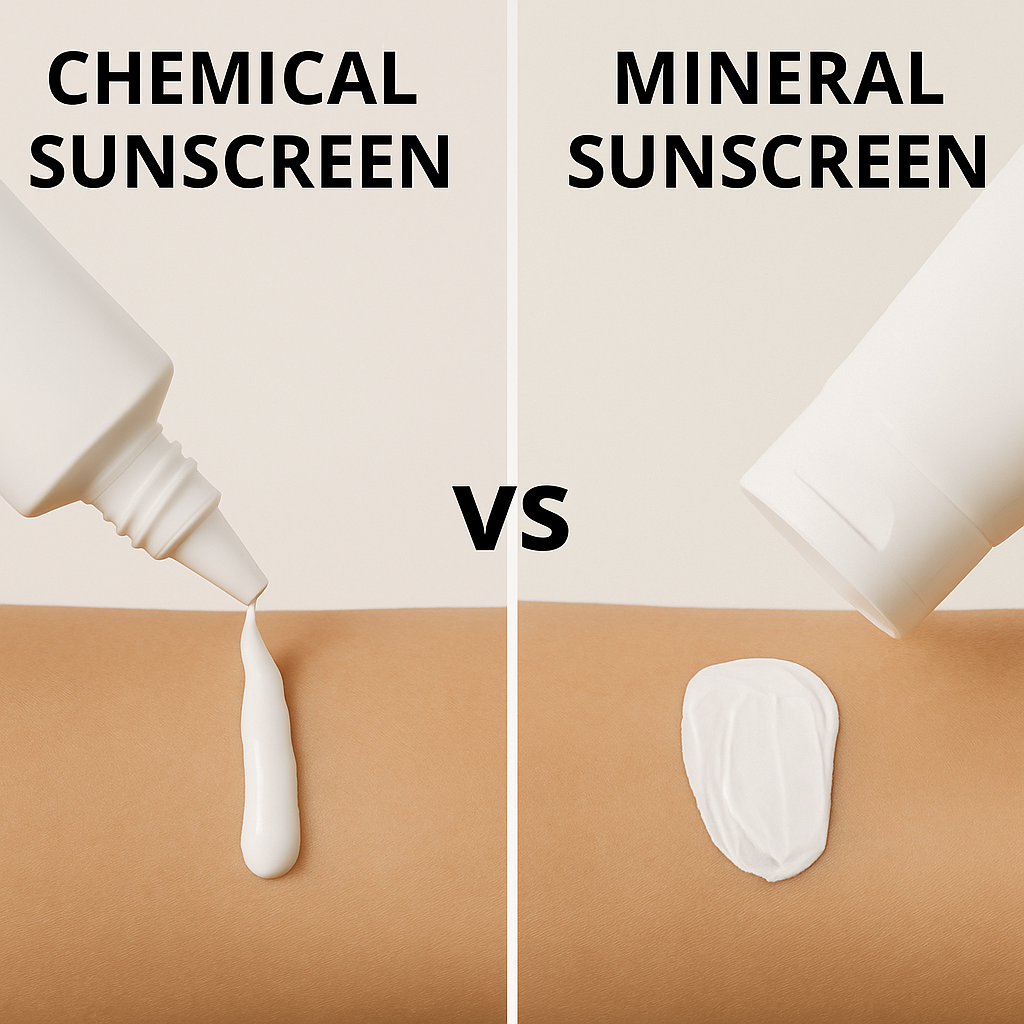How to Choose the Right Sunscreen for Your Skin Type
Sunscreen is an essential part of any skincare routine, but choosing the right one can be confusing. Should you go for chemical or physical sunscreen? Let’s break it down.
1. Two Main Types of Sunscreen

- Chemical sunscreen (also called organic sunscreen)
- Physical sunscreen (also called mineral or inorganic sunscreen)
What is Chemical Sunscreen?
Chemical sunscreens absorb UV rays and convert them into heat through a chemical reaction. They're lightweight, invisible on the skin, and easy to apply.
- 👍 Pros: Lightweight texture, no white cast, blends well under makeup
- ⚠️ Cons: Can irritate sensitive skin, needs to be applied 20–30 minutes before sun exposure
What is Physical Sunscreen?

Physical sunscreens create a protective barrier on the skin that reflects UV rays. They start working immediately after application and are often gentler on the skin.
- 👍 Pros: Instant protection, great for sensitive skin, less likely to cause irritation
- ⚠️ Cons: Thicker texture, potential white cast, can be harder to remove than chemical sunscreens
2. Which One Should You Choose?
It depends on your skin type and lifestyle:
- 😌 Sensitive skin → Physical sunscreen
- 💄 Under makeup / daily wear → Chemical sunscreen
- ⏱ In a hurry → Physical sunscreen (no wait time)
Also, don’t forget about SPF and PA ratings. For daily use, we recommend SPF 30–50 with PA++ or higher.
3. How Much Should You Apply?
Most people don’t apply enough sunscreen to get full protection. Here’s a general rule of thumb:
- 🧴 A nickel-sized amount for your face
- 🧴 A shot glass amount (about 1 ounce or 30ml) for your entire body
Source: American Academy of Dermatology
4. Final Thoughts
Choosing sunscreen isn’t just about SPF numbers. Consider your skin type, daily routine, and texture preference. The right sunscreen can protect your skin and keep it healthy for years to come.
👉 Not sure about your skin type? Take the quiz!Written by SkinFit